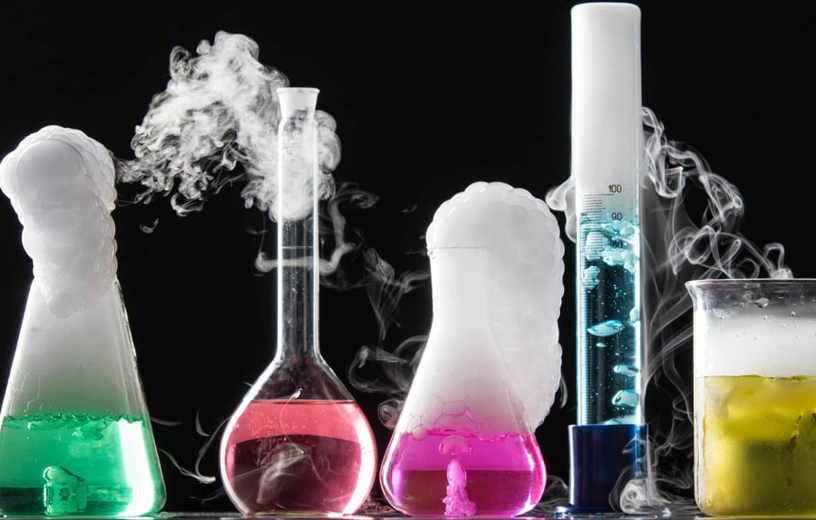10 Effective Examples of Chemistry in Real Life
If I ask you what comes to your mind when you hear the word chemistry, I am sure you are going to imagine yourself standing in a chemistry lab and holding various laboratory instruments. But if you look closely at the world around you, an infinite number of chemical reactions are happening every second. We will discuss 10 effective examples of chemistry in real life.

Thus, it can be rightly said that chemistry forms a large part of your daily life. Chemistry and chemical reactions are not limited to the laboratory but also exist in the world around you. The element carbon forms the basic unit of organic, inorganic, and organic compounds. From the time you go to sleep until you wake up, infinite chemical processes are taking place in every cell of your body.
Even the processes that happen when you wake up, all your daily activities like drinking water, taking a shower, cooking your food, cleaning your car, smiling, or crying are governed by different chemical processes.
So let’s discuss some examples of chemistry happening around us:
(1) Body composition
Our body is an interesting place. Carbon and oxygen are the two most essential elements in the body. Other elements present in our body are nitrogen, phosphorus, hydrogen, oxygen, calcium, potassium, sulfur, magnesium, etc.
(2) The chemistry of Emotions
Whenever you feel happy, sad, happy, relieved, or stressed, many chemical reactions occur in your body. Chemical messengers released in the brain called neurotransmitters can make you fall in love and cry rivers of heartbreak.
(3) Chemistry in food production
Plants make food for themselves through photosynthesis; which itself is a complex chemical reaction. The chemical reactions that occur in photosynthesis are the most common and important chemical reactions. Animals also release energy to carry out daily activities through the same chemical reactions of respiration.
6 CO2 + 6 H2O + light → C 6H12O6 + 6 O2
(4) Chemistry in Hygiene
Just before you eat your food, you make it a point to wash your hands with soap. right? The cleaning action of soap is based on its ability to act as an emulsifying agent. Soaps are fatty acid salts of sodium or potassium; Produced by a chemical reaction called saponification. Soaps interact with grease or oil molecules, resulting in a clean surface.
(5) Chemistry of an Onion
Have you ever wondered why you are shedding tears while cutting onions? This is also due to the underlying chemistry concept. Sulfenic acid is formed from amino acid sulfoxide when onions are cut. Sulfenic acid is responsible for the volatile gas, propane thiol S-oxide, which stimulates tear production in the eye.
(6) Chemistry in Baking
Who does not like to eat fluffy fresh baked bread? Baking soda is an efficient leavening agent. Adding baking soda to food items before cooking produces carbon dioxide (CO2); Due to which the food increases. This entire process of rising baked goods is called chemical leavening.
(7) Food Preservative Chemistry
If you’ve ever read the ingredients on a bottle of ketchup, jam, or pickles, you might be surprised by the never-ending list of chemicals. What are they? These chemicals are called food preservatives; which retards the growth of microorganisms in food. Chemical food preservatives not only inhibit the growth of bacteria, viruses, and fungi but also inhibit the oxidation of fats, which are responsible for the rancidity of food. The most common chemical food preservatives are sodium benzoate, sorbic acid, potassium sorbate, calcium sorbate, sodium sorbate, propionic acid, and salts of nitrous acid.
(8) Chemistry in Digestion
The moment you put food in your mouth, various chemical reactions begin in your digestive system. Saliva contains the enzyme amylase, which is responsible for breaking down carbohydrates, the stomach begins to produce hydrochloric acid, the liver releases bile, and the list of compounds released during digestion goes on. How do they work? All these enzymes undergo chemical reactions to ensure proper digestion, as well as assimilation of food.
(9) Sunscreen Works
Before going out on a sunny day, make it a point to wear sunscreen. Even the principle, behind how sunscreen works, has a chemistry background. Sunscreen uses a combination of organic and inorganic compounds to act as filters for incoming UV rays. Sunblocks, on the other hand, diffuse UV light; So that they cannot penetrate deep into the skin. Sunblocks contain complex chemical compounds such as zinc oxide or titanium oxide, which block UV rays from penetrating deep into the skin.
(10) Chemistry in rust Formation
Over time, your iron tools begin to develop an orange-brown flaky coating called rust. Rusting of iron is a type of oxidation reaction. Metallic iron atoms undergo oxidation and reduction; Causing rust. The formation of verdigris on copper and the tarnishing of silver are other everyday examples of chemical reactions. The chemical equation underlying rusting is:
Fe + O2 + H2O → Fe2O3. XH2O
Conclusions:
From the above discussion, we can say without chemistry we can’t think about our life. Chemistry is very important in our everyday life.




